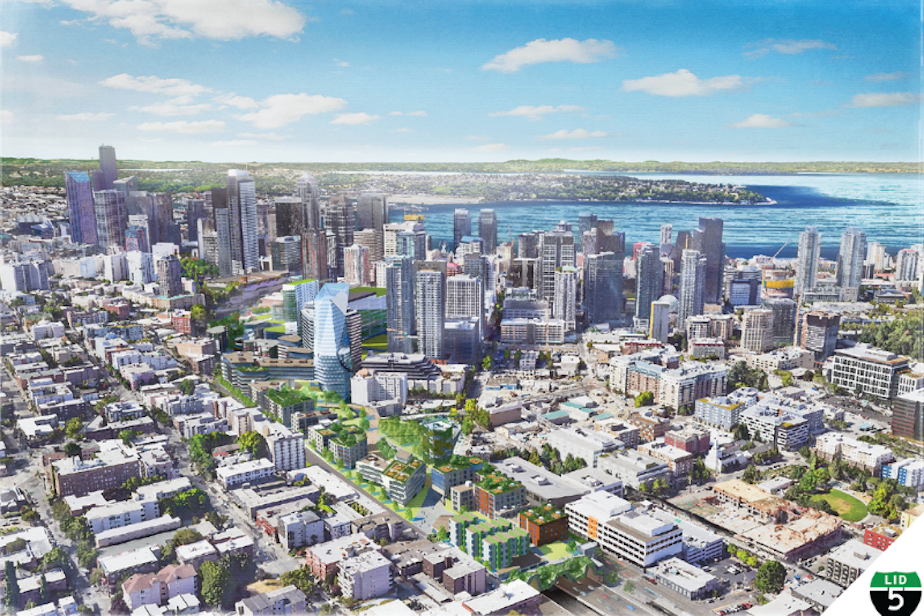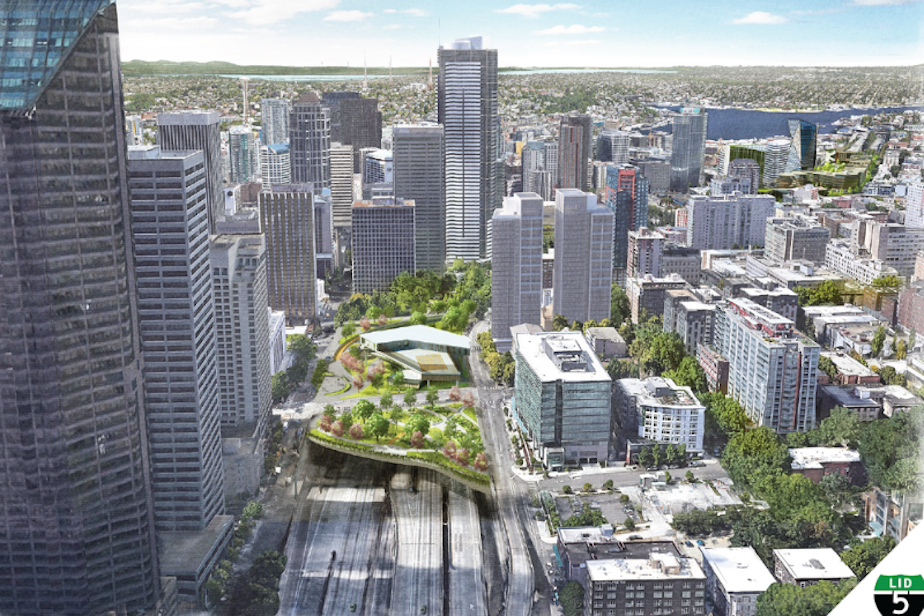To lid or not to lid: Should I-5 be covered through the heart of Seattle?

Sixty-two years ago, Seattle residents took to the streets, protesting the construction of I-5.
Residents of First Hill organized the demonstration. The marchers were concerned about how the new freeway would impact their communities because it would split up parts of downtown and adjoining neighborhoods, bringing noise and pollution through the middle of the city.
There was a proposal to lessen these impacts. The idea was to cover a portion of the freeway with a lid, on top of which, homes and businesses could be built.
However, that proposal didn’t go anywhere. It would’ve been more expensive, and there was no federal funding for it. State officials pushed the existing plans through, and I-5 opened just a few years later.
But, the concept of a lid never quite went away. And now the proposal has new life. Last week the Seattle City Council voted in favor of a resolution declaring support for the idea of an I-5 lid, which sets the city on a path to pursue federal funding.
Sponsored
The City Council vote is a victory for the Lid I-5 movement. But it’s also part of a broader trend of cities rethinking their relationship to freeways. Atlanta, Austin, and Minnesota’s Twin Cities are all exploring some form of cap on new or existing stretches of freeway.
Last year, Buffalo, New York, received $55 million from a pilot program in the federal infrastructure bill. It’ll go towards adding a cap and tunnel onto a 1960s-era six-lane expressway that demolished hundreds of homes when it was built and segregated Black residents from the rest of the city.
Lyle Bicknell, an urban designer with the City of Settle, said these efforts represent a reckoning decades in the making.
"Most of my day job is undoing decisions of the 20th century," Bicknell said.

Sponsored
He was the project manager for a feasibility study that looked into the potential of covering part of I-5 in Downtown Seattle with a park — or even retail and residential buildings.
He joined Soundside's Libby Denkmann to talk about where things stand and what last week's vote will do to help push this proposal forward.
To start, Bicknell shared that it won't be an easy fix.
"We've got a complicated piece of freeway there in terms of typography, in terms of geometry, in terms of on ramps and off ramps," he explained.
But, between the experience the city has with Freeway Park, the Mount Baker tunnel, and the lids on Mercer Island, Bicknell said the city knows how to do make these projects happen, they're just expensive.
Sponsored
"One is to really think about, 'What is the function of the lid?'" Bicknell said. "Make sure that how it works, how it's designed, how it functions for pedestrians and bicyclists is the first thing you start with."
Another consideration is equity. Right now, the city is in the process of building a lid on top of SR-520 in the Montlake neighborhood. The I-90 tunnel lid in Mount Baker and Mercer Island lids are other examples of acreage being added in wealthier neighborhoods, where places like the Chinatown International District have been split by infrastructure projects for years.
"Equity is a huge part of this conversation," Bicknell explained. "And we really think about it in everything we do."
The other part of the equation is all about finding funding. This is a project that would take many years and require a lot of money, but in the end Bicknell said it'll be worth it.
"I think we just forget how much damage the construction of these sorts of highways, expressways, freeways have done to our city," he said. "And as soon as you get that lid in place, as soon as it's covered up, it is just utterly transformative."
Sponsored
Listen to Soundside’s full conversation with Melissa Santos & Lyle Bicknell by clicking the play icon at the top of this story.





